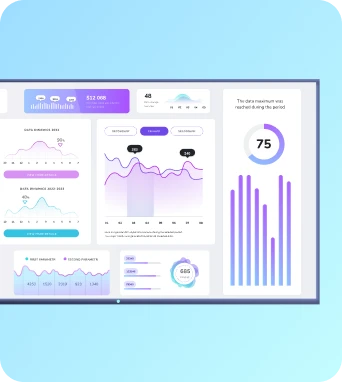Automated real-time content updates
Automated real-time content updates automatically ingest, transform and publish live data feeds to digital signs and TV dashboards. They synchronise content with external sources such as APIs, sensors and business systems, ensuring displays present current metrics, schedules and alerts across networks with minimal manual oversight and immediate propagation of changes.
Automated real-time content updates
How automated real-time updates work
Automated real-time updates rely on a pipeline that connects one or more live data sources to the signage player software. Sources can include REST APIs, webhooks, RSS feeds, spreadsheets, IoT sensors and internal business systems such as stock, HR or scheduling platforms. The pipeline normally performs three core tasks: ingestion, transformation and distribution. Ingestion captures raw events or periodic snapshots from sources; transformation maps and reformats those inputs into display-ready assets or structured content; distribution pushes the final payload to players, either as pushed updates via a persistent connection or as pulled updates on a short polling interval. Templates and widgets at the device or cloud level render the transformed data into graphics or text that match brand and layout requirements. A robust implementation also includes caching, rate-limiting and retry logic to handle network interruptions and rate constraints from external APIs. Caching ensures that when sources are temporarily unavailable, displays continue to show the last known valid values rather than blank screens. Rate-limiting and batching reduce the number of calls to external systems and avoid service throttling. Administrators can define fallbacks and prioritisation rules so critical alerts supersede routine updates. Security considerations—authentication, encryption, and scoped API keys—protect data in transit and prevent unauthorised pushes to the signage network. Monitoring and logging complete the loop, exposing latencies, failed deliveries and content drift so teams can maintain SLA-level performance for their display estate.
Key benefits and practical use cases
The primary benefit of automated real-time content updates is timeliness: audiences see the most recent information without manual intervention. For operational dashboards in control rooms or retail tills, that means inventory, incident reports and KPIs move from point-in-time snapshots to continually accurate representations. Customer-facing screens in stores can show live product availability, queue times and personalised promotions driven by point-of-sale or CRM signals, increasing relevance and reducing confusion. In workplace environments, HR and facilities teams use real-time updates for room bookings, shift changes and safety notices so employees encounter the right information at the right moment. Beyond immediacy, automation scales content management across device fleets. Centralised feed configurations let network managers apply a single connector to thousands of screens without bespoke uploads. That reduces administrative load and ensures consistent messaging across locations or departments. Real-time updates also enable event-driven signage: when a sensor detects a condition, an alert can automatically override routine content and display priority instructions. Measurable outcomes include reduced response times for incidents, higher display uptime and improved engagement metrics where content relevance is tightly coupled to current conditions. In a Fugo.ai setup, combining the platform’s feed connectors, templates and scheduling controls yields a controlled, auditable path from data source to screen, balancing flexibility with governance.
Best practices for deployment and maintenance
Keep the learning going...
Automated failover
An automated process that detects failures in systems or services and switches operations to a standby resource without human intervention to maintain availability.
Automated playback scheduling
Automated playback scheduling is the system that schedules and triggers content playback across screens automatically. It uses time‑based rules, time zones, recurring patterns, calendar events and priority overrides to ensure playlists run at the right times on Fugo.ai-managed TV dashboards and signage players without manual intervention.



